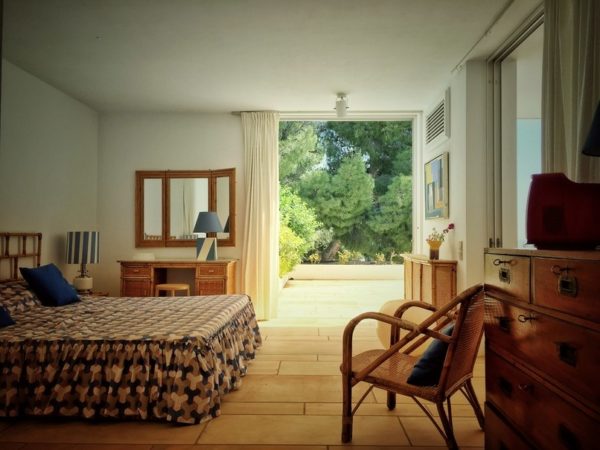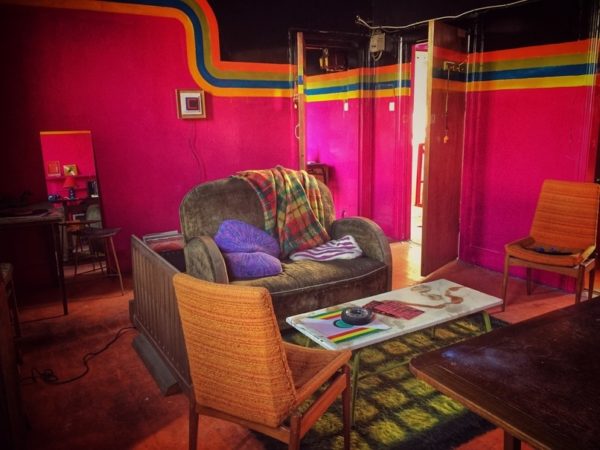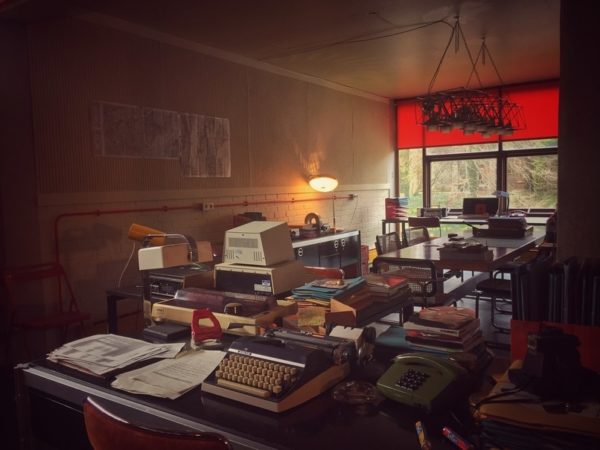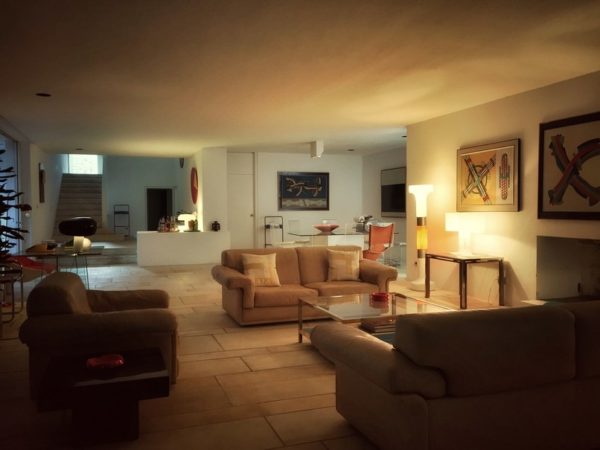An Insider’s Tour of the Retro Sets of AMC’s The Little Drummer Girl
Set in the colorful ’70s and across multiple international locales, this throwback spy thriller packs a visual punch.
No one can weave a spy thriller quite like John le Carré. On top of all the twisty-turny espionage that engrosses readers from novel to novel, the British author’s narratives span countries and continents, taking readers on journeys that are as mysterious as they are globe-spanning. And now, following the success of the 2016 limited series adaptation of le Carre’s The Night Manager, AMC, the BBC, and The Ink Factory have joined forces again to bring another one of his expansive tales to TV. In a story that finds characters in England, Greece, Germany, Yugoslavia, Austria, Israel, and Lebanon, The Little Drummer Girl, a six-part series based on the 1986 book and airing tonight on AMC, follows a British actress, Charlie (Florence Pugh), who becomes embroiled in an Israeli spy ring trying to infiltrate a Palestinian terrorist cell. As she takes on a dangerous role directed by spymaster Kurtz (Michael Shannon) and begins a complicated relationship with Israeli intelligence officer Becker (Alexander Skarsgård), Charlie becomes caught between two worlds and her allegiances become unclear.

For production designer Maria Djurkovic, whose work includes Tinker Tailor Soldier Spy, The Imitation Game, and Red Sparrow, the story’s 1979 setting wasn’t difficult to create. The challenge of the production came from the sheer number of sets and locations, which she estimates at about 130. Djurkovic, however, managed to accomplish all these settings in just three countries: England, the Czech Republic, and Greece, the latter of which lent itself to the most memorable location for Djurkovic: the Acropolis. The production was able to shoot at the Athens landmark at night—a major coup that required permission from the prime minister.
With so many locations, creating a sense of cohesion and an overall aesthetic was a top priority. “It was important to give the piece its own identity,” she explains. Djurkovic began with a massive amount of image research for each country, which she printed and hung on the walls and hallways of the art department. “It looked like the collage of some crazy woman,” she says. From there, the show’s saturated color palette, which often contrasts with the stark exterior architecture of the European settings, emerged. “There are the same colors that we use to paint in the Palestinian refugee camp as I would be using in a house in Germany,” she says of interiors dressed with curvy 1970s-era furniture and geometric art, so as to make every location—such as the hotel and villa in Greece where Charlie becomes entangled with Becker and Kurtz—feel period appropriate. “You unify everything with color.”




While many of the settings feel temporary for the characters, the designer was still able to evoke their personalities. “It’s always thinking about what those characters would want to surround themselves with,” Djurkovic says. Charlie’s apartment was outfitted with magenta walls with a stripe running through the space. “Charlie’s flat is extremely bold,” she says. “But she is an extremely bold and fiery young woman.” The team left brush marks and imperfections to make it look like something the struggling actress might have done herself.
For the apartment of Michel (Amir Khoury), one of the Palestinian targets, Djurkovic created a set that was part safe house, part bachelor pad. “He’s a bit of a playboy, so we reflected that in the kind of place he’d probably rent,” she says. “It was a little bit glitzy.” Elsewhere, a two-story space was transformed into the Munich apartment used as the headquarters of Kurtz and his team. In that space, warm oranges and reds of the design serve as a foil to the drab holding cell in the middle of the lower level.
Djurkovic also drew upon her own memories of childhood vacations in Greece and Yugoslavia for the set designs.”I felt very comfortable with this period because it’s in my living memory,” she explains. “I’ve got this bizarre kind of memory where I remember visuals. I can’t remember anyone’s name. I can’t remember any information. But I do remember visual things.” One location, however, took her out of her comfort zone: Lebanon, which she had to re-create in Greece. “I couldn’t dig into my own kind of resources,” she says. “I had to research all that.” But her walls of images did the trick. “The young actor who played Michel came into the art department and was looking at the photographs, and actually said to me, ‘I can’t believe this isn’t Lebanon.’”